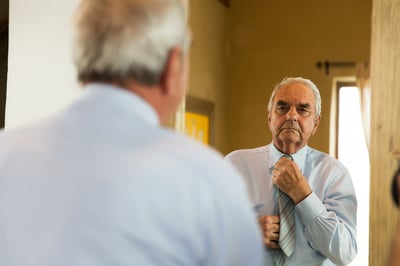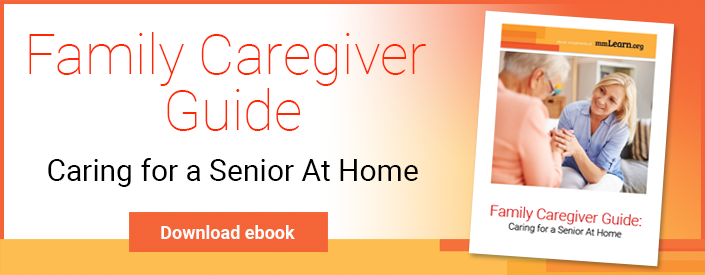 As people age, the simple task of dressing and undressing can become unduly difficult. The inability to get dressed can even keep people from doing the activities they love.
As people age, the simple task of dressing and undressing can become unduly difficult. The inability to get dressed can even keep people from doing the activities they love.
Adaptive clothing can remove barriers by making dressing easier, prolonging independence and activity.
For seniors and their caregivers alike, adaptive clothing can help overcome challenges stemming from physical limitations. In doing so, wearers can gain back their independence, which can be especially meaningful for those uncomfortable being touched by their caregivers.
In the video below, presenter Elizabeth Woods, RN:
- Explains the benefits of adaptive clothing for both the caregiver and the care receiver
- Shows examples of how adaptive tops, pants, shoes, and other clothing items work
- Demonstrates how to modify regular clothing to make it into adaptive clothing
Why Adaptive Clothing?
Clothing and fashion can have a tremendous positive effect on an individual's mental and physical well-being, for several reasons:
- Individuals with conditions that cause pain often experience painful joint movements when dressing and undressing. In limiting the need for these movements, adaptive clothing offers pain relief.
- The ability to dress independently can grant wearers—especially those who don’t like to be handled—more freedom in their daily lives. It can also reduce the emotional stress people feel when they can no longer do tasks that were once easy for them.
- Being able to dress in a way that represents one’s identity can go a long way toward restoring a sense of confidence for wearers.
- Caregivers can also exert less time and energy on helping their patients dress.
What Is Adaptive Clothing?
Adaptive fashion is specially customized to help wearers work around their disabilities to don and doff clothing and accessories. There are many examples of alterations that make life easier for elderly and disabled individuals.
- Shirts with magnetic closures exist for people with arthritis or quadriplegia who struggle with traditional buttons.
- Wheelchair users who need to get dressed while seated can opt for pants that are elasticized, can open partially or completely down the sides, and/or rise higher in the back to account for seated comfort.
- Shoes with Velcro and zippered openings that open up completely are easy to step directly into and then fasten.
Where to Find Adaptive Clothing
Fortunately, more options for adaptive clothing are available than ever, including adaptive lines from mainstream fashion retailers:
- Zappos Adaptive by Zappos: A wide range of adaptive clothing and shoes to fit a variety of needs. Featured brands include Nike’s FlyEase sneakers with easy zipper wrap-around closures and MagnaReady magnetic apparel.
- Tommy Adaptive by Tommy Hilfiger: Adaptive clothing for men and women with physical disabilities, including shirts, pants, jackets and dresses with features including magnetic zippers, Velcro closures, and adjustable hems.
- Design for all collection by Target: Clothing is design-engineered to fit the needs of adults and children with various needs, with features including wider silhouettes and custom fits to increase ease of dressing.
- IZ Adaptive: Fashionable tops, bottoms, outerwear, and accessories tailored to a wide range of physical disabilities.
- Silvert’s: Adaptive clothing and footwear for elderly men and women.
- Resident Essentials: Products include adaptive clothing for seniors and disabled adults, as well as accessible home furniture.
- Buck and Buck: Adaptive clothing for seniors and disabled adults, plus elderly care products.
Not in the market for an entirely new wardrobe? Local alterations shops can tailor regular clothing to make them more accessible. Adaptive fashion nonprofit Open Style Lab also sells easy hacking kits for modifying clothing.
More Caregiving Resources
If you're looking for a comprehensive resource for family caregivers, use our online Family Caregiver Guide.

